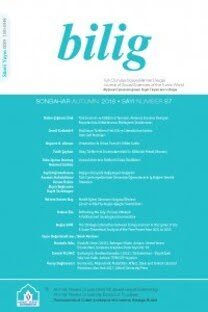Attribution in Turkish with Dependency Tree Analyses
___
Aydın, İlker (2004). "Türkçede Yan Tümce Türleri ve İşlevleri", Dil Degisi Lan- guage Journal, 29-55._____, (2006). "Türkçede Tümce Çözümü ve Öğretimi Üzerine İki model". Dilbilim, Dil Öğretimi ve Çeviribilim Yazıları. Ankara: Pegem A Yay. 229- 242.
_____, (2008). "Türkçe, Fransızca ve İngilizce Örneklerle L. Tesnière'in Yapısal Sözdizimine Giriş". Dil Karşısında Dil Örneklerle Karşılaştırmalı Dilbilim. Van: Yüzüncü Yıl Üniversitesi Yay. 261-285
_____, (2009a). "Birleşik Cümle Üzerine". Uluslar Arası Türk Dili ve Edebiyatı Kongresi UTEK 2007. İstanbul: G.M. Matbaacılık. 35-74.
_____, (2009b). "Geleneksel Dilbilgisi ve Stemmaya Dayalı Çözümleme". XXII. Ulusal Dilbilim Kurultayı Bildirileri. Ankara: Cantekin Matbaası. 526-537.
Dik, Simon Dik (1989). The Theory of Functional Grammar. Dordrecht: Foris.
Erkman-Akerson, Fatma (2000). Dile Genel Bir Bakış. İstanbul: Multilingual.
Erkman-Akerson, Fatma ve Şeyda Ozil (1998). Türkçede Niteleme, Sıfat İşlevli Yan Tümceler. İstanbul: Simurg Yay.
Ediskun, Haydar (1999). Türk Dilbilgisi. İstanbul: Remzi Kitabevi.
Gencan, Tahir Nejat (2001). Dilbilgisi. İstanbul: Ayraç.
Göksel, Aslı ve Celia Kerslake (2005). Turkish: A comprehensive grammar. Lon- don: Routledge.
Hatipoğlu, Vecihe (1972). Türkçenin Sözdizimi. Ankara: TDK Yay.
Karabulut, Ferhat (2009). "Köktürkçenin Sıfat Fiilli Yapı Tipolojisi". bilig 48: 91-118.
Kornfilt, Jaklin (1997). Turkish. London: Routledge.
Lewis, G. L. (1967). Turkish Grammar. Oxford University Press.
Şimşek, Rasim (1987). Örneklerle Türkçe Sözdizimi. Trabzon: Kuzey Gazetecilik Matbaacılık.
Tomasson, Roberte (1996). Pour enseigner la grammaire. Paris: Delagrave.
YAZ 2013 / SAYI 66 01-40
Türkçede Bağımsal Ağaç
Çözümlemeleriyle Niteleme İlker Aydın
- ISSN: 1301-0549
- Yayın Aralığı: 4
- Başlangıç: 1996
- Yayıncı: Ahmet Yesevi Üniversitesi Mütevelli Heyet Başkanlığı
İnsan Hakları: Kavramsal Bir Çözümleme
Yöntem ve Uygulama Açısından "Türkiye Türkçesi Söz Varlığının Derlem Tabanlı Sözlüğü"
Attribution in Turkish with Dependency Tree Analyses
Şehzade Abdülkerim Efendi'nin Japonya'nın Desteğiyle Türkistan İmparatoru Olma Meselesi Üzerine
1917 Yılında Hicaz Cephesi: Arap İsyanının Yayılması ve Medine'nin Tahliyesi Programı
General İvan K. Kişelskiy'in Balkan Slavları Hakkındaki 1863 Yılı Raporu
Elif Şafak'ın Romanlarında Çokkültürlülük Aracı Olarak Tasavvuf
Doğu ve Ötekilik: İngiliz Seyahatnamelerinde Türk Kimliği (Lady Montagu ve Richard Chandler)
